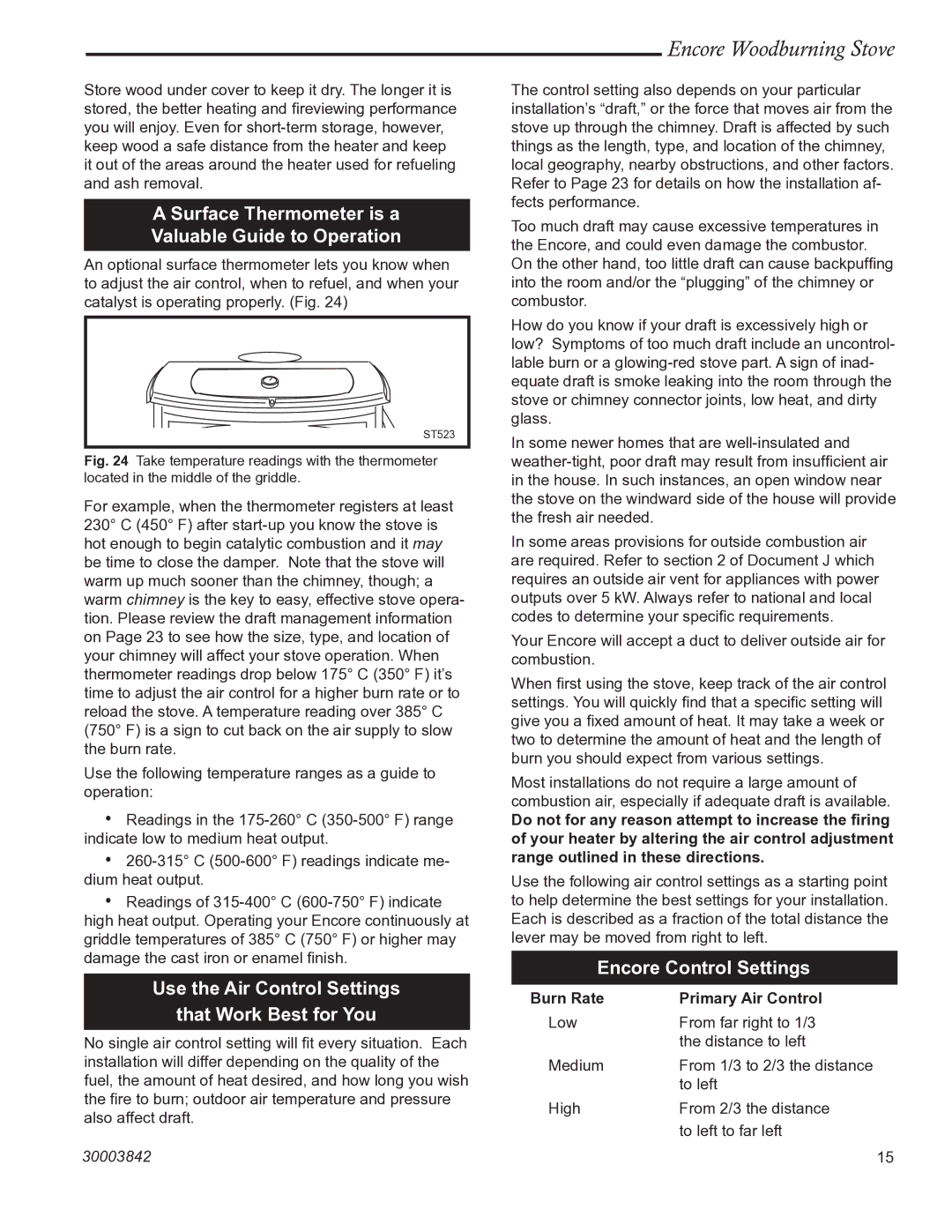2550CE specifications
The Vermont Casting 2550CE is a remarkable wood-burning stove that embodies both efficiency and style, making it a preferred choice for those who desire a reliable heating solution combined with aesthetic appeal. This model stands out in the realm of traditional wood stoves, offering an exceptional blend of performance features and innovative technologies.At the heart of the 2550CE is its robust cast iron construction, which contributes to superior heat retention and distribution. Cast iron is known for its ability to radiate warmth long after the fire has dwindled, ensuring a cozy atmosphere in your living space. This model also features a large ceramic glass door, providing a captivating view of the flames while allowing for easy monitoring of the fire's conditions.
One of the defining characteristics of the Vermont Casting 2550CE is its advanced secondary combustion system. This technology enhances the stove's efficiency by reburning the exhaust gases, thus extracting maximum heat from the wood and reducing emissions. This not only makes for a cleaner burn but also extends the burn time, allowing users to enjoy an extended period of warmth with fewer reloads.
The 2550CE is designed with functionality in mind, equipped with an easy-to-use air control system that enables precise regulation of airflow. This allows users to adjust the fire’s intensity based on their immediate heating needs, maximizing both comfort and fuel efficiency. Moreover, the stove’s large firebox accommodates logs up to 18 inches in length, making it practical for those who prefer to minimize the frequency of reloads.
In terms of style, the Vermont Casting 2550CE features a classic design that complements various interior decor styles, including rustic, traditional, and modern settings. Available in several finishes, including matte black and enamel options, the stove can be customized to match individual tastes and home aesthetics.
The commitment to sustainability is another significant aspect of the 2550CE. With its lower emissions rates complying with EPA standards, homeowners can enjoy a warm and inviting environment while being mindful of their environmental impact. Overall, the Vermont Casting 2550CE combines time-tested craftsmanship with modern technology, making it an ideal choice for anyone seeking an efficient and elegant wood-burning stove.

